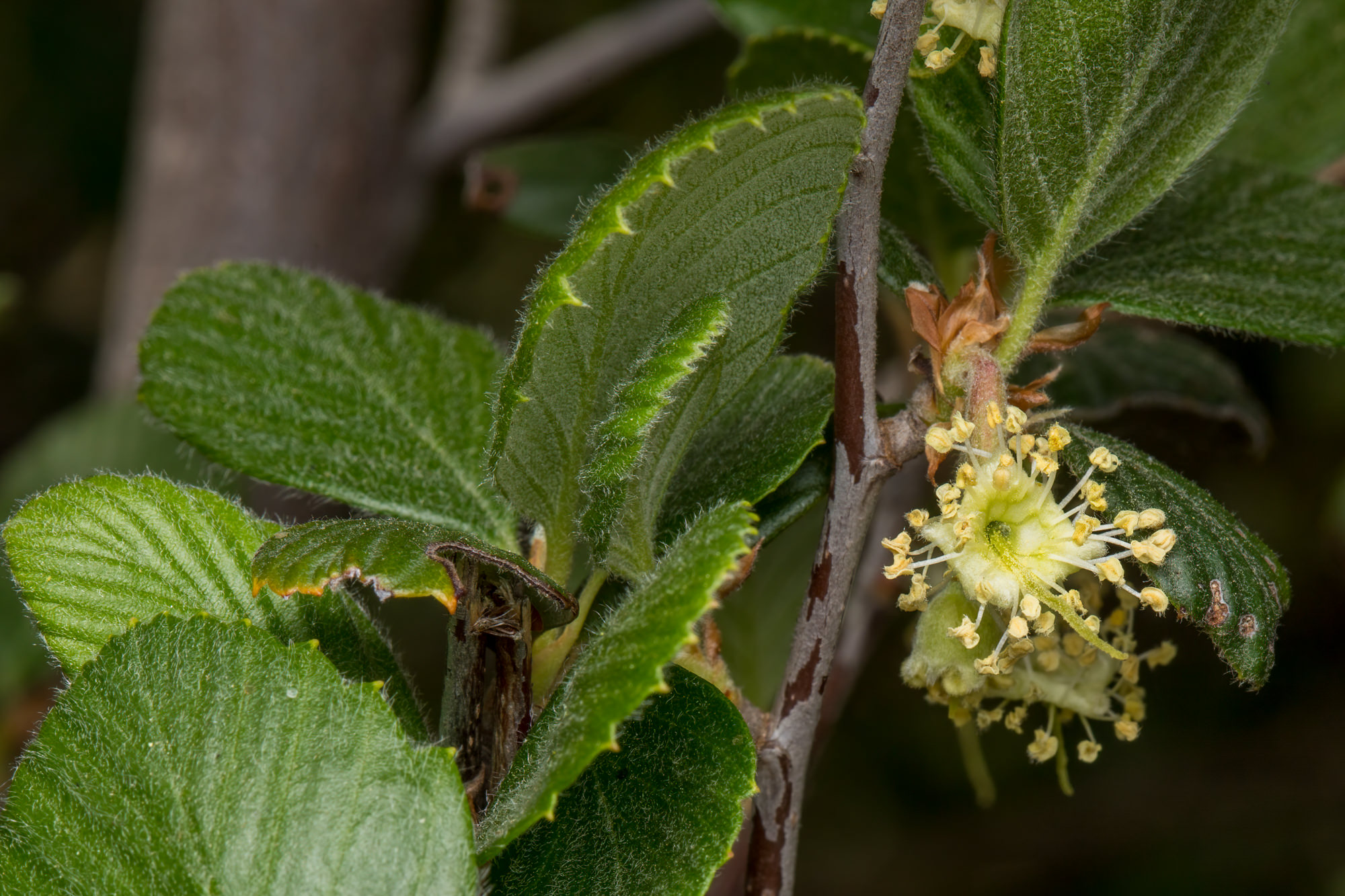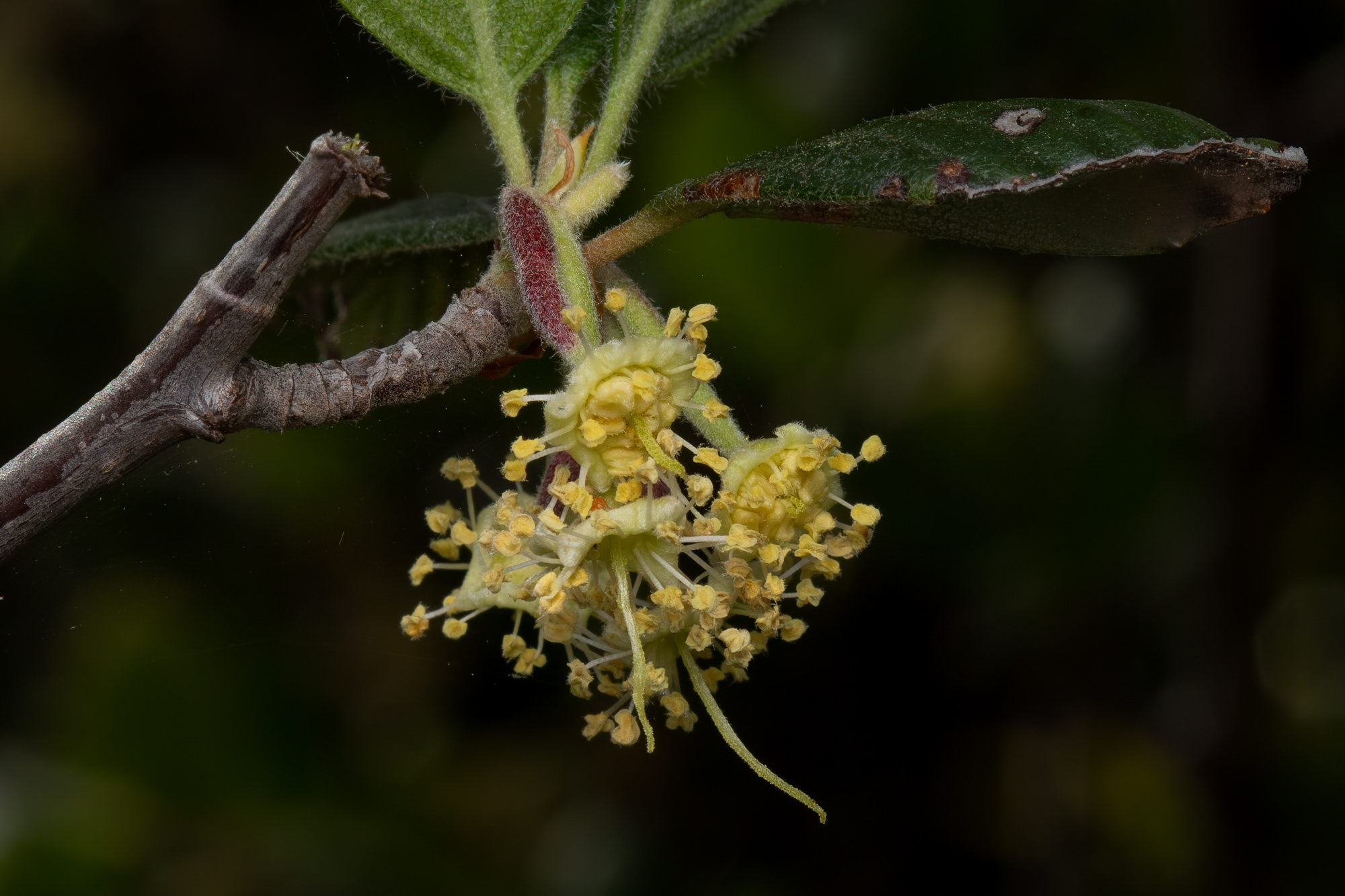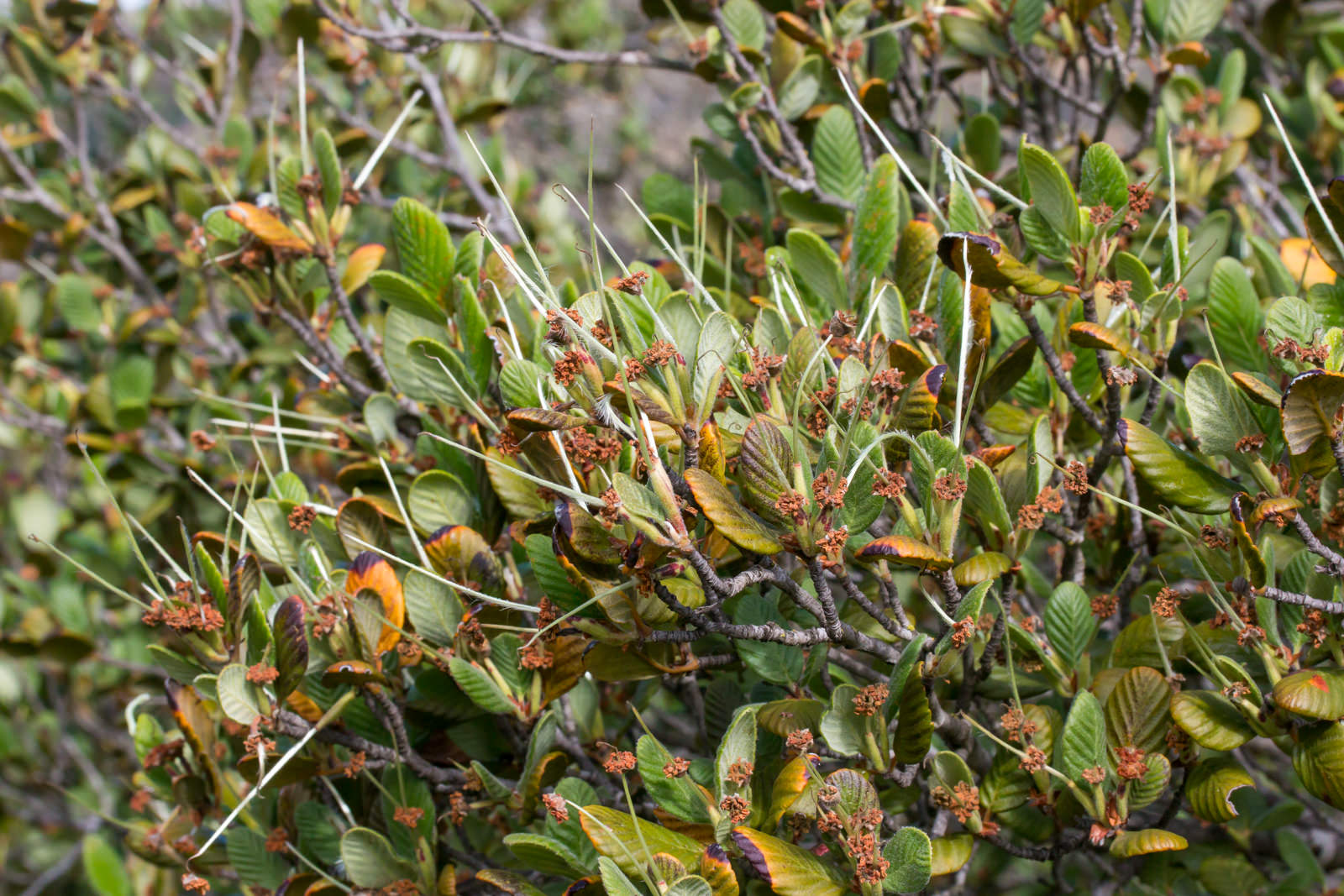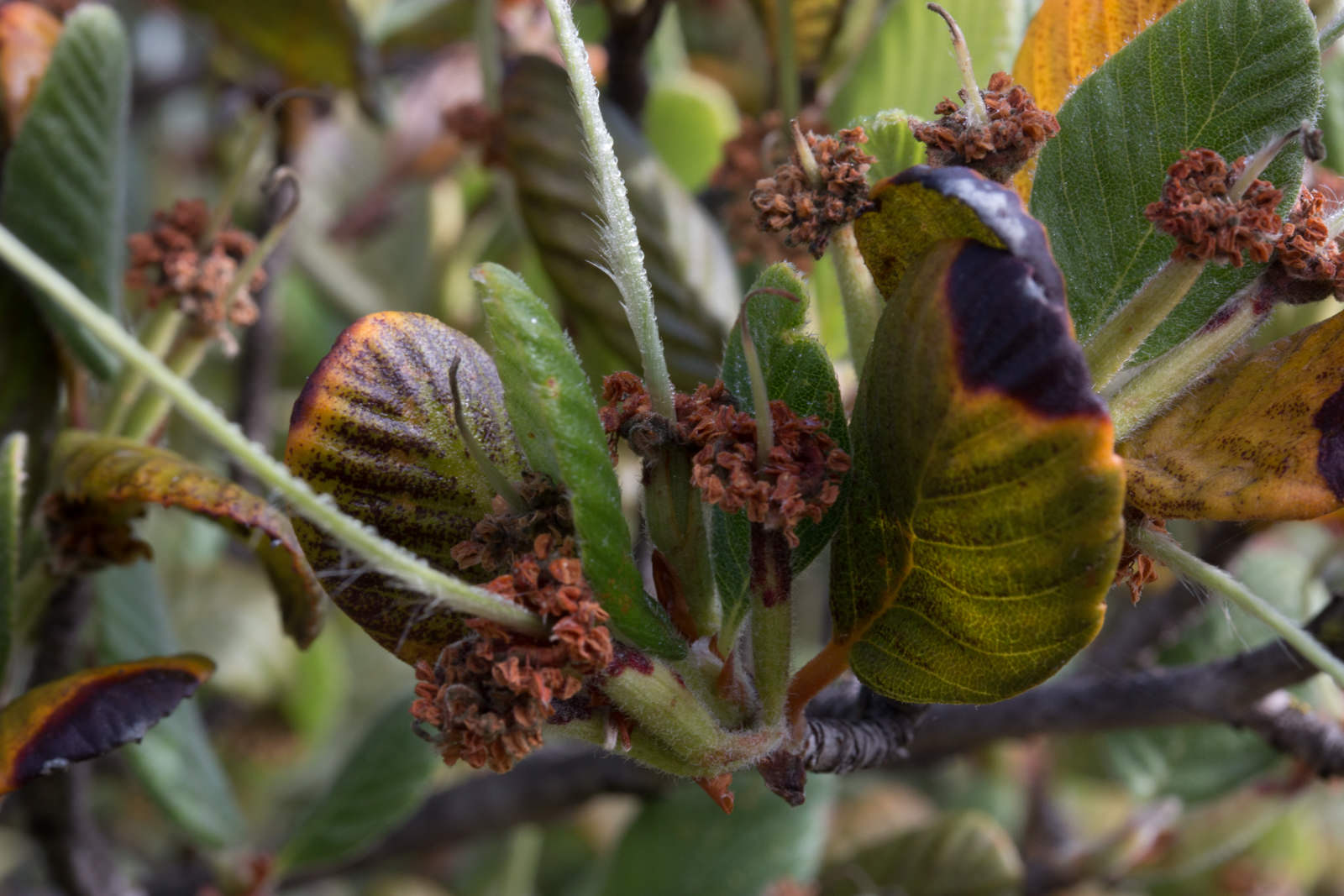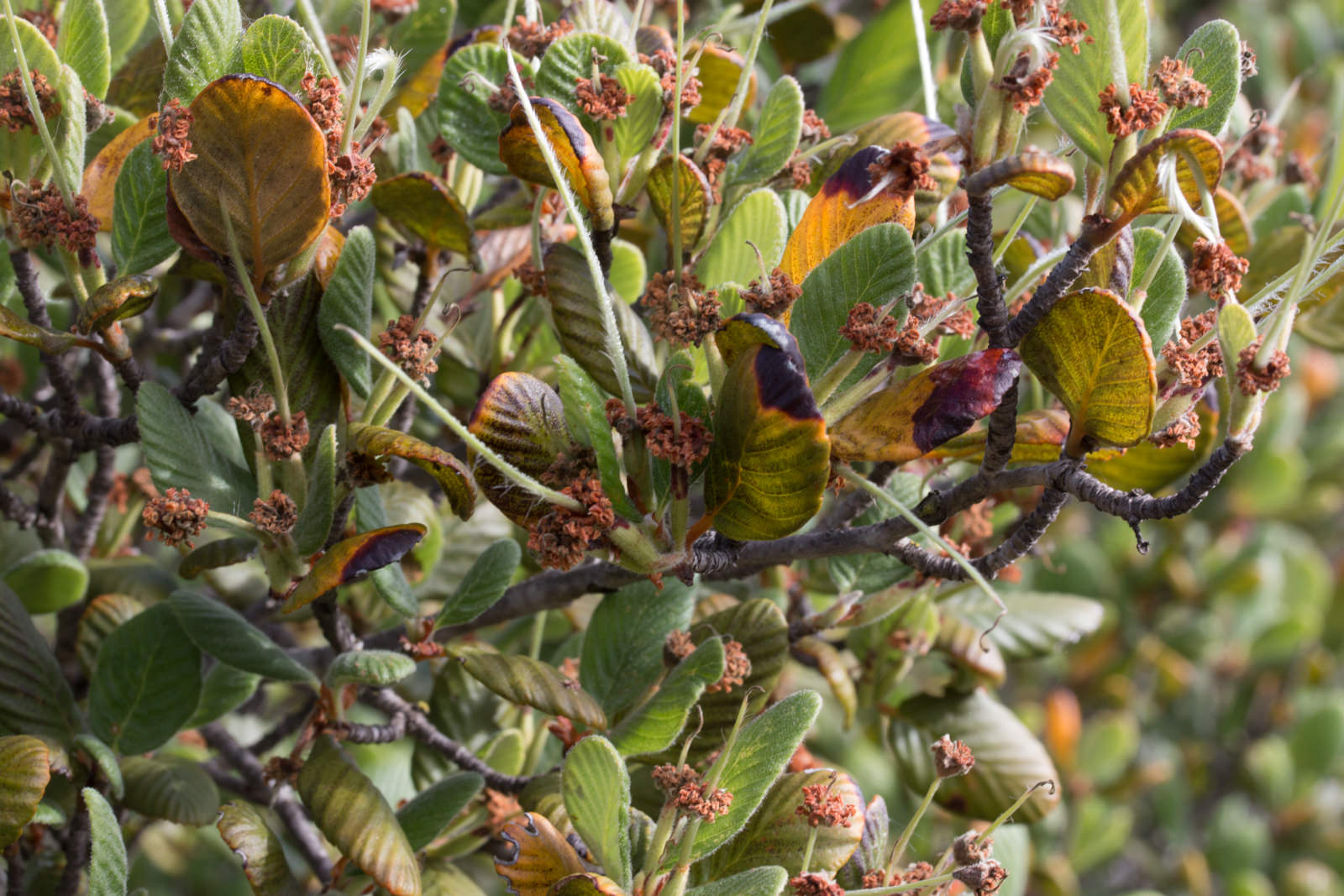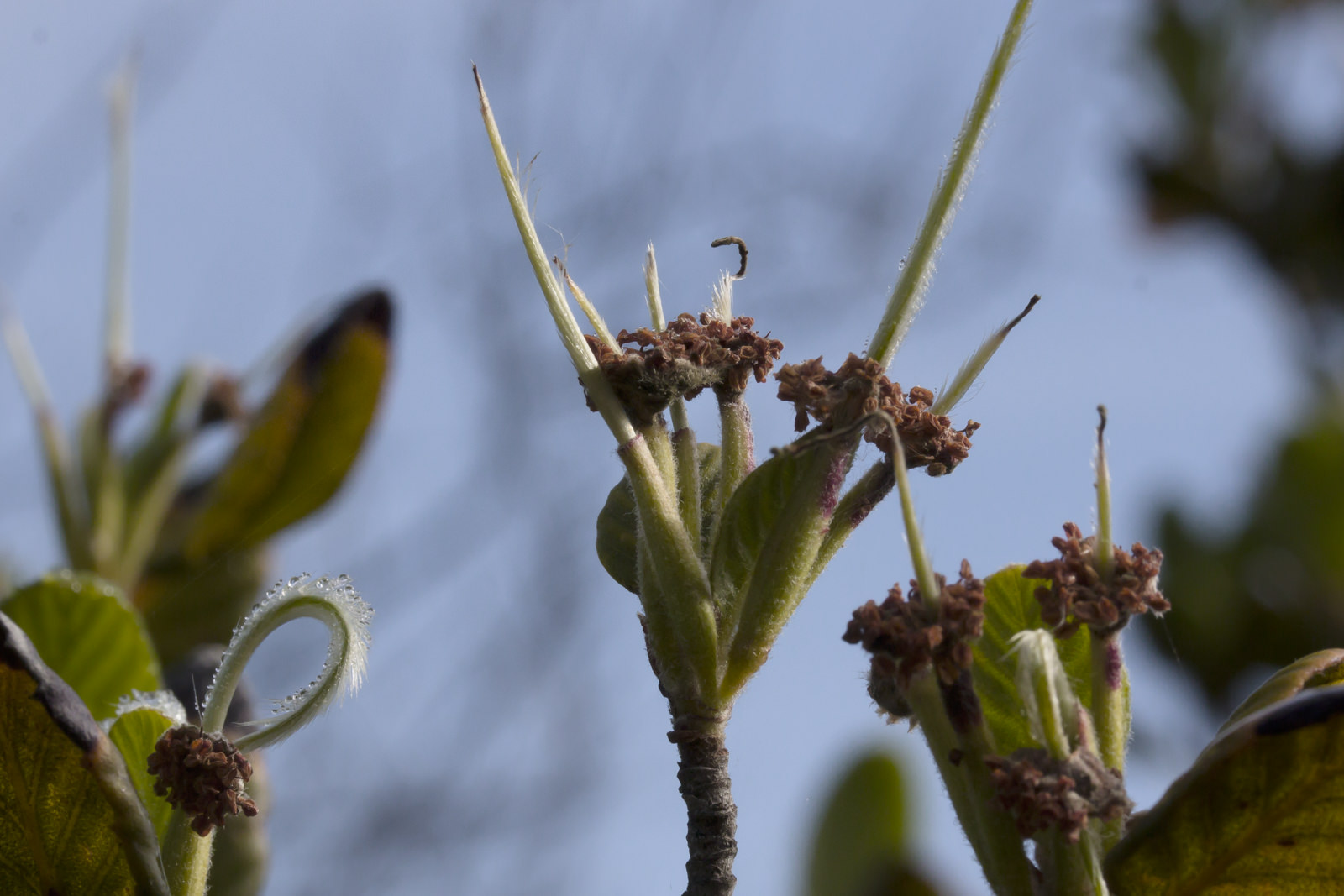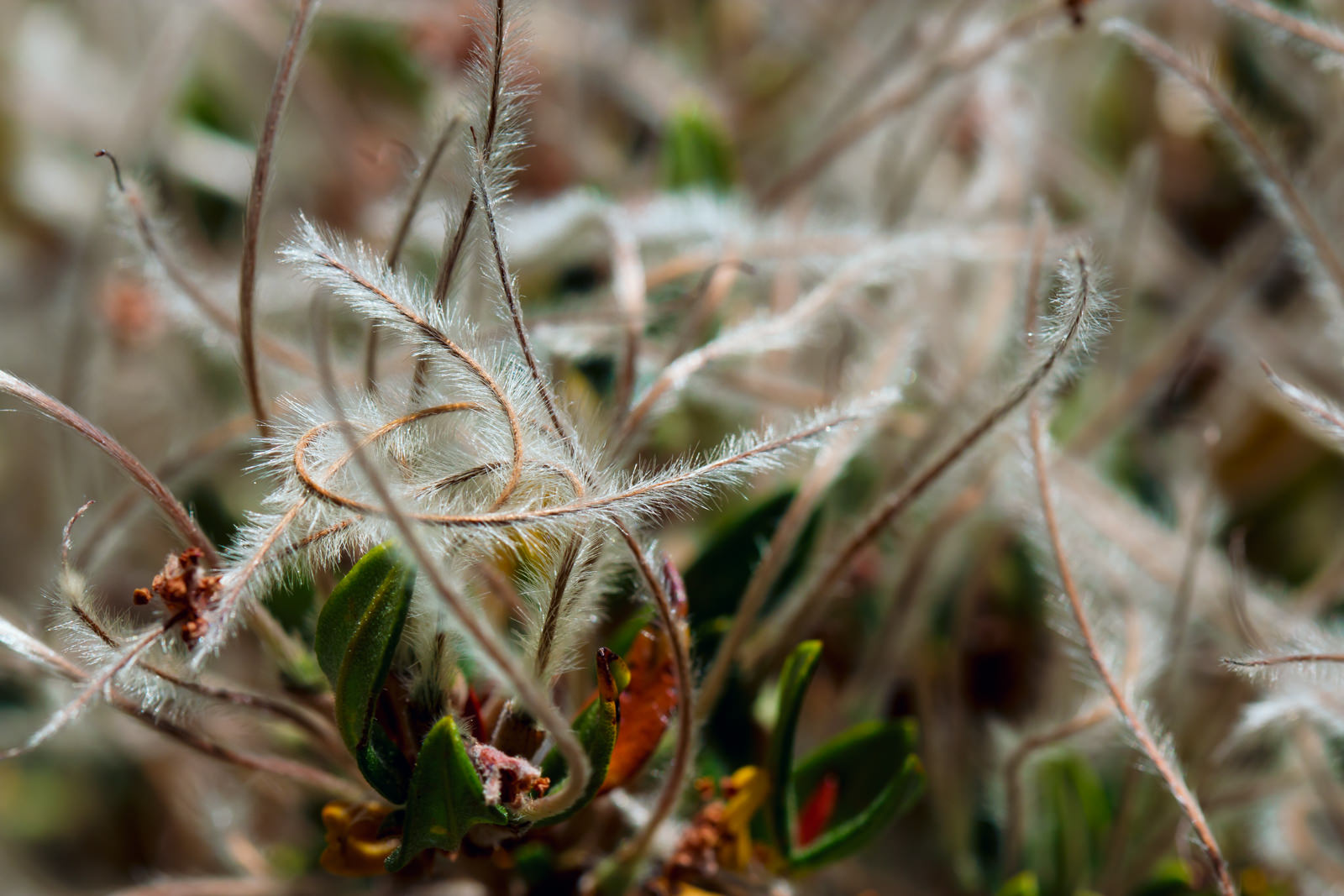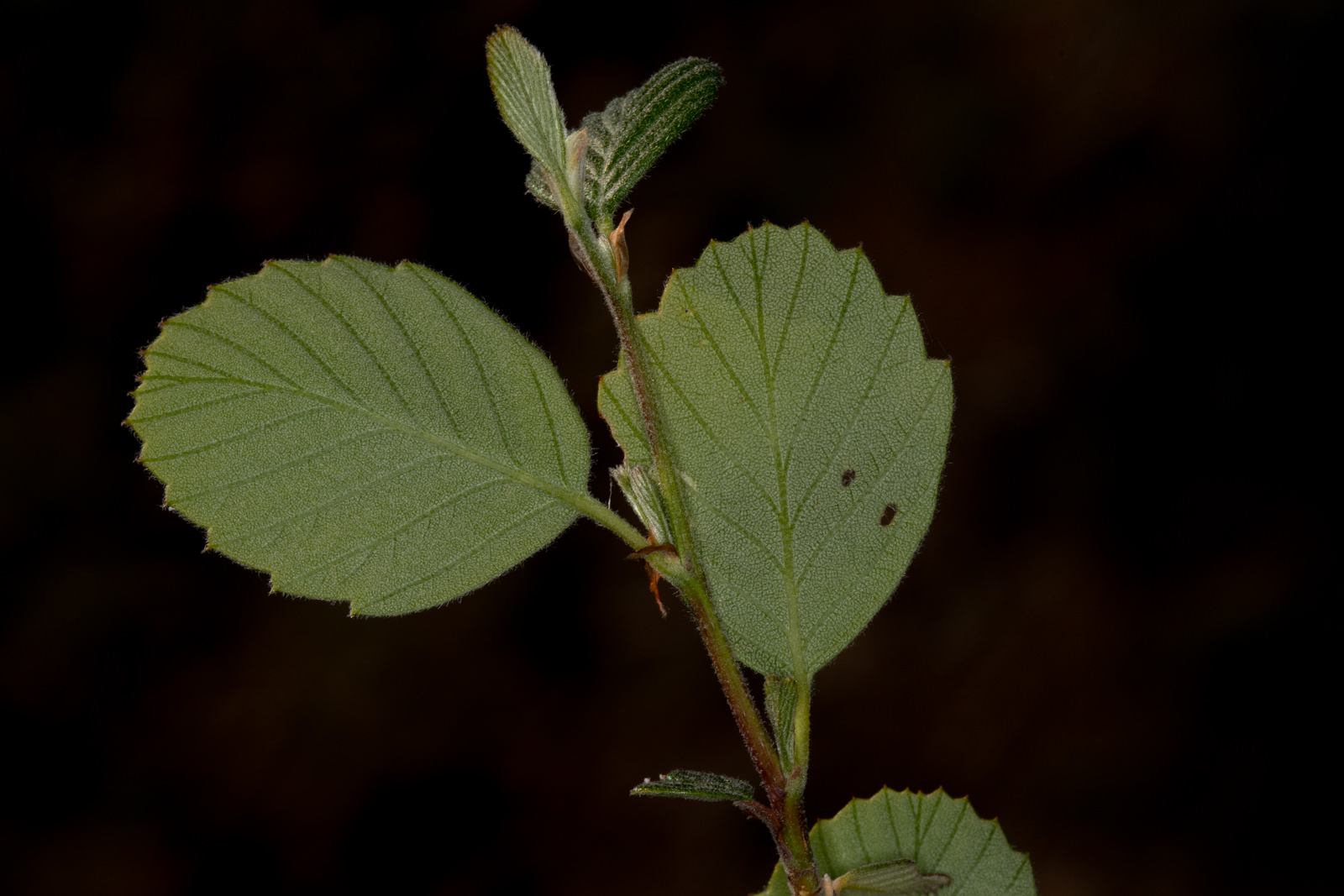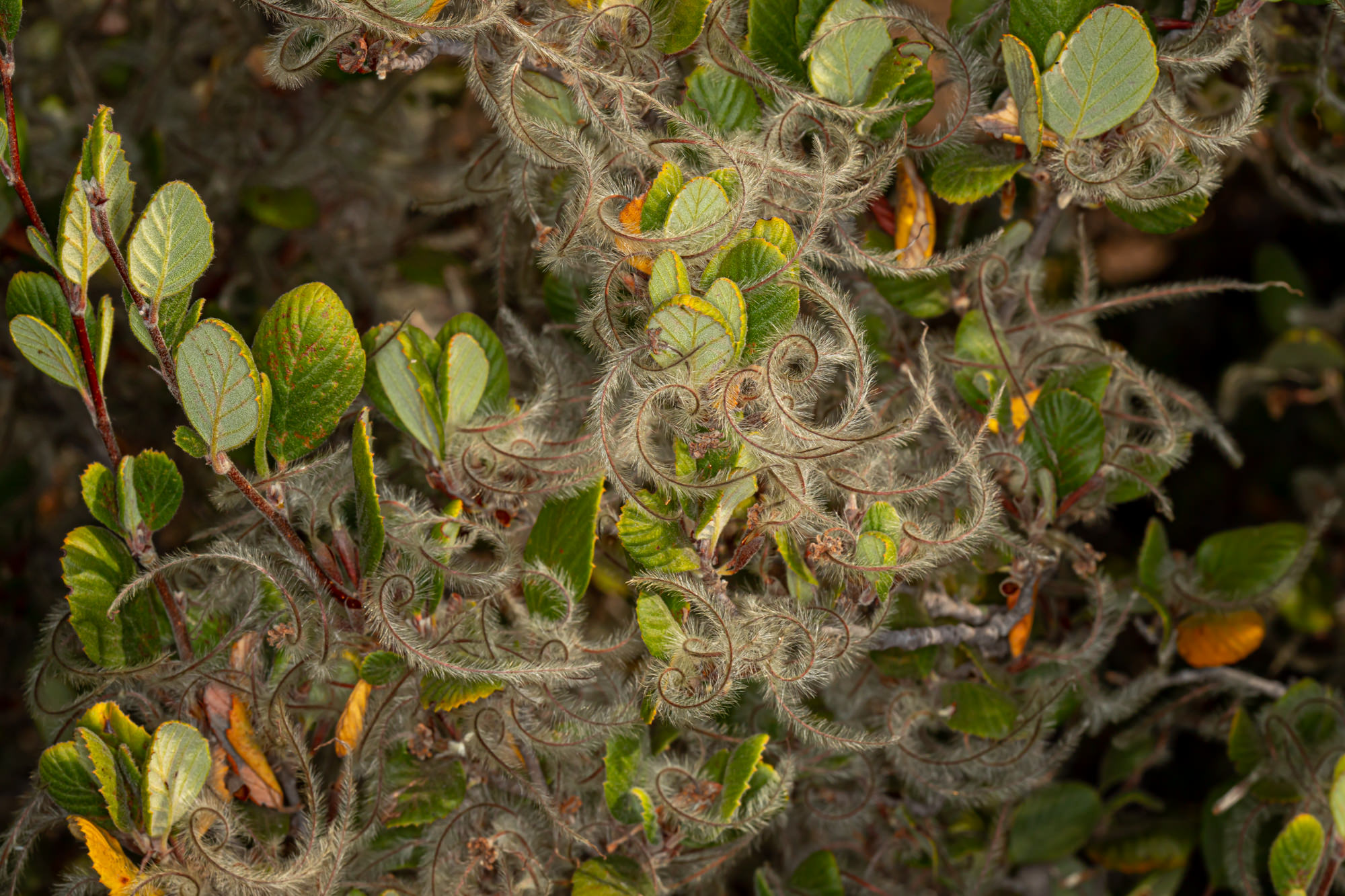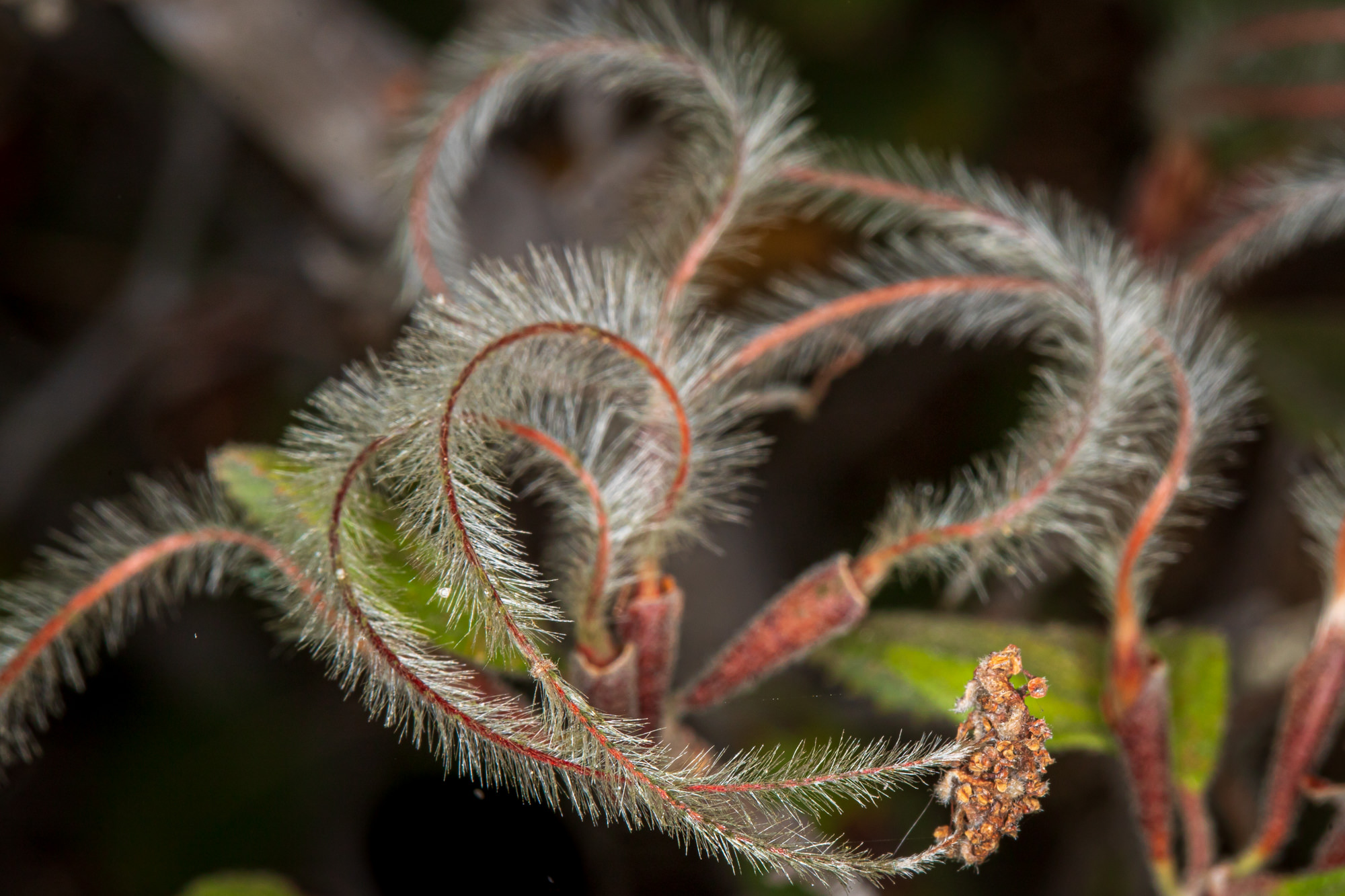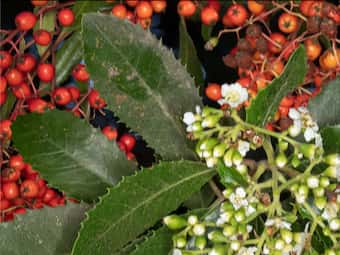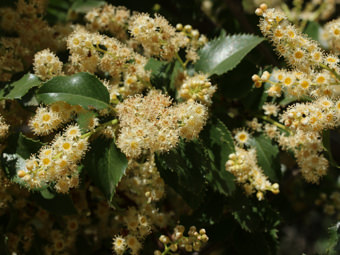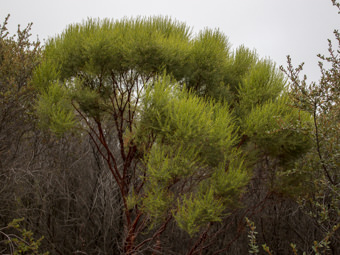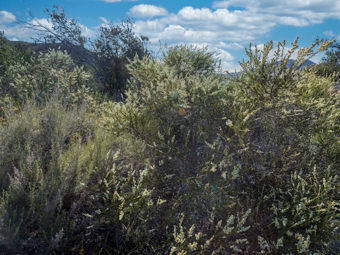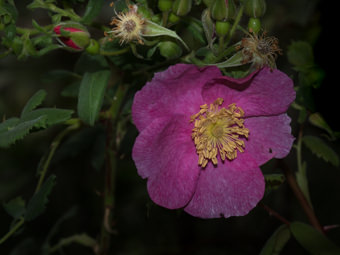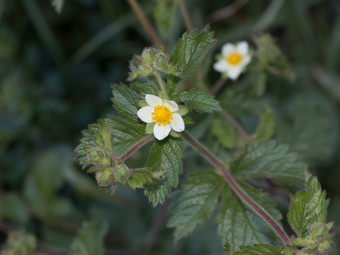Mountain Mahogany
- Cercocarpus betuloides
| Common Name(s): | Mountain Mahogany |
| Scientific Name: | Cercocarpus betuloides |
| Family: | Rosaceae (Rose) |
| Plant Type: | Shrub |
| Size: | up to 30 feet |
| Habitat: | Chaparral |
| Blooms: | February to May |
| Fire Response: | Sprout from Stump |
California Mountain Mahogany - Cercocarpus betuloides - prefers dry areas in the foothills and mountains of California. This native shrub ranges in size from three to more than six meters in height (10 to 20 or more feet). Some guides refer to this a Birch Leaf Mountain Mahogany because the leaves are similar to birch and alder. Looking at the shrub you might not guess it is in the Rose (Rosaceae) family. This designation was bestowed upon this plant based upon the flowers. Mountain Mahogany is also not a true Mahogany - even though the color and hardness of the wood are similar.
Smooth gray bark covering reddish wood, dark green birch-like leaves and clusters of inconspicuous flowers, this plant is most noticeable when it disperses its seeds. Each tiny fruit contains a single seed with a spiraled tail that is feather-like. Seeds, resulting from the flower’s self-pollination are eventually dispersed by the wind. Simple rounded leaves, alternate, pleated appearance and with noticeable straight veins. There are toothed serrations on the leaf edge from the middle of the leaf to the tip. During the warmer months the leaves are parallel to the sun and can curl inward (toward the midvein) to minimize surface area exposed to the sun. The top side of the leaves are dark green. The bottom of the leaf is paler or whitish with fine, short hairs.
This plant is drought tolerant and under ideal conditions this plant can live for more than 100 years! This shrub adapts to local conditions by having larger or smaller leaves. Where conditions are drier, leaves tend to be smaller. On shaded slopes leaves tend to be larger.
The inconspicuous flowers can be Green, Red or White. Blooming in Spring. With a hand lens you can observe the perfect flowers (male and female parts in each flower). Somewhat fragrant during the Spring.
Fire Response: Sprouts from trunk
Native American Californians used the hard wood for arrows, digging and spearing fish. Other uses for this shrub were as a dye and a medicinal tea.
Link to Calflora.net - the best source of this fascinating information.
Name Origin: Derived from the Greek kerkos, meaning "tail", referring to the tail-like appearance of the fruit; and carpus meaning "fruit": which means fruit with tail. Betula is the genus for birch which refers to the birch-like leaves.
Contributed by George Sherman
Featured Plants in the Rosaceae (Rose) Family:
Last modified: August 21 2024 15:18:59.
Number of Images: 11
Image Size Total: 4,359,265
References:
Wildflowers of the Santa Monica Mountains, by Milt McAuleyFlowering Plants: The Santa Monica Mountains, Coastal and Chaparral Regions of Southern California, by Nancy Dale
Chumash Ethnobotany: Plant Knowledge Among the Chumash People, by Jan Timbrook
Leaf Shapes Primer - Botanical Terms for Leaves: - Link

